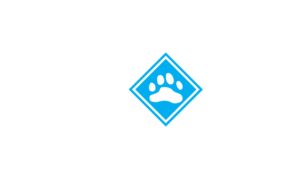
Currently it’s winter here in Vermont, and winter means skiing! That’s a good thing for us, but there is one problem. Winter is COLD! For some that probably doesn’t come as surprise. However, for others the cold can be a bit of a turn off.
Here at the Catamount Trail Association we offer a variety of free day tours, multi-day tours, instructional events, and many other opportunities to get outside during the winter and we don’t want you to be scared of a little cold. So, here are a few tips to help you stay warm the next time the mercury plummets.
TIP 1: Dry = Warm
Everyone know’s the mantra Cotton Kills… and it’s not untrue. Cotton holds onto moisture like non-other, and once you’re wet and start cooling off you’re headed down a dangerous path. So, whether you’re choosing what to wear, or deciding how hard to push up that next hill you want to be making choices that will help keep you dry.
That means don’t be afraid to slow down a little. Moving is going to keep you warm, but charging uphill and sweating through everything you brought is a poor idea. Also, when choosing your layers it’s better to go with more lighter layers than fewer heavier layers. This will allow you to more finely tune your clothing system, and thinner layers will dry more quickly.
TIP 2: Use Heat Sensitive Zones To Your Advantage
Your head, neck, hands, forearms, and back are all heat sensitive areas. These are areas you can use to your advantage. Think about it… if your goal is to feel comfortable, but you need to dump heat and perspiration what are your options?
Most people would remove their hat and gloves first. They’re easy to take on or off and removing them improves your comfort level quickly. However, while you’re heads out there flapping in the breeze feeling good your torso is still generating too much heat and soaking your insulating layers.
Your other option, and one we think you should consider, is removing extra layers from your body and keeping your head, hands and maybe even your neck covered. You can maintain a similar level of apparent warmth and comfort with less clothing on your torso if you keep these areas covered. This means you feel just as warm, but your body can more easily get rid of excess heat and moisture. This takes us back to Tip 1 and staying dry. Also, it’s easy to carry an extra dry hat and gloves, and you should probably have these anyway.

TIP 3: Keep The Furnace Fueled
This is a pretty straight forward tip, however keeping yourself fed and hydrated is something that can easily be forgotten especially when it’s cold out. On really cold days it’s hard to want to stop. Not stopping makes it less likely that you’ll take the time to properly eat and drink, so it’s best to carry foods that are compact, easy to eat on the go, and don’t freeze. Items like cheese and summer sausage are great. They pack a lot of calories, taste good, and can be precut into small, easy to eat pieces. Nut butters are also great choices as they too are calorie dense and easy to eat on the run.
Also, don’t forget about staying hydrated. Water can be a tricky thing to keep in liquid form during the winter months. Many packs will accommodate a hydration bladder, but the hose will freeze eventually. Your best option is an insulated bottle or thermos. Not only will these keep liquids from freezing, but they will allow you to bring hot drinks along for the fun. There’s nothing like some hot chocolate, or tea with honey to pick up the spirits and warm the insides.
TIP 4: Sometimes Nothing Beats A Big Puffy & Handwarmers
Sometimes your systems break down, or an accident happens. Maybe you crashed while cruising through a sweet glade and now there’s snow down your back and everything is soaked. Maybe, it’s just really freaking cold. Whatever the reason, there are times when staying warm means breaking out the biggest, thickest jacket you have and cracking open the hand warmers.
Sometimes things go wrong and it’s never a bad idea to be prepared. The cold temperatures of winter don’t leave a lot of room for errors. Make sure you have a backup plan, an exit strategy, and proper safety equipment… It could really make a difference.









